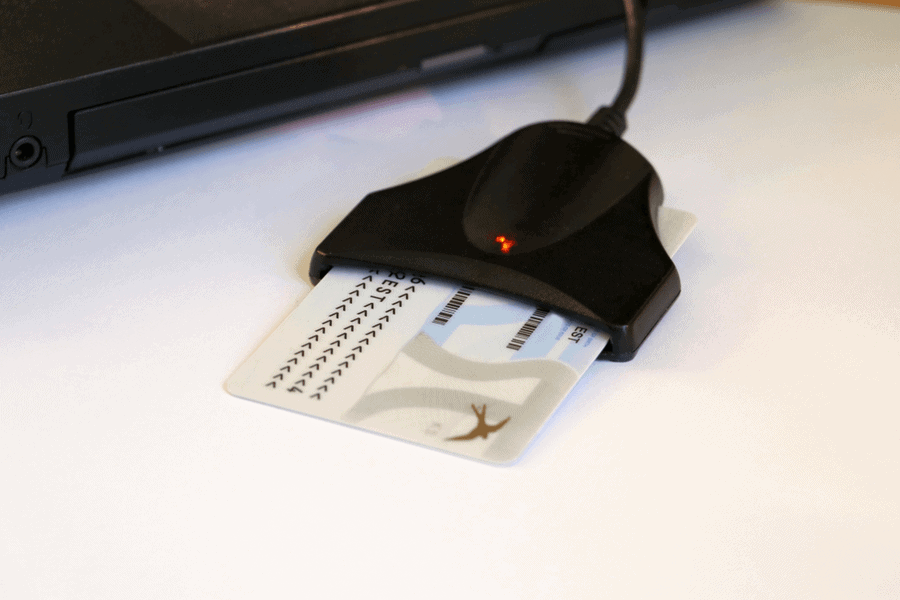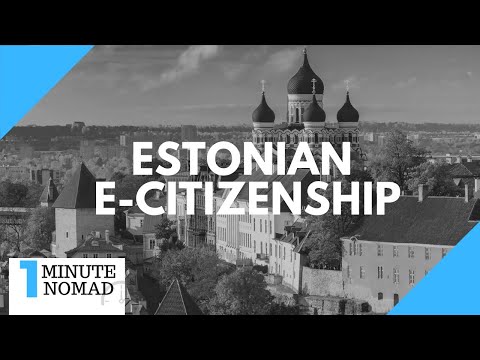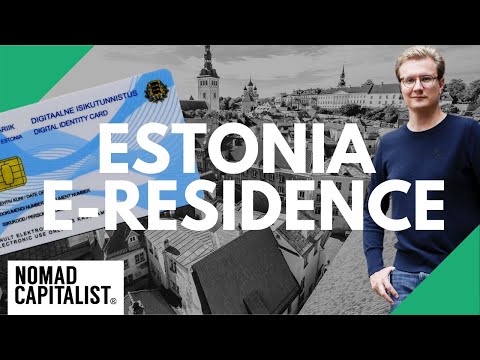How to Get Estonian E-Residency: the Ultimate Guide
May 30, 2024
Last updated November 7, 2020
Dateline: Tbilisi, Georgia
Estonia, well known as Eastern Europe’s tech gem, has been on the radar of location independent entrepreneurs, expats, and digital nomads for many years.
Thanks to its fast internet speeds, easy flat tax hailed by US politicians, innovative e-residency program, and overall favorable environment for international investors, it has garnered a respected name on the world stage.
If you were looking for a place to register your business in Europe or get a second residency, chances are you have already heard of and researched the Estonian e-residency program.
Since the program’s debut on December 1, 2014, it is still one of the most talked-about programs out there. As of April 2020, over 100,000 people around the world have already been registered as Estonian e-residents and there are now roughly 12,000 companies run by e-residents.
So far, the program has generated almost 35 million EUR.
And the program is looking to continue its growth. The program director, Kaspar Korjus, has stated that Estonia aims to attract at least 10 million e-residents by 2025, so there’s a bit of a way to go.
Due to the attention that this program has received over the years, I have stumbled across a lot of unaddressed questions and common misconceptions from people looking at e-residency as a way to invest and bank in Estonia.
Consequently, in this article, we will address the following points to clear up any misunderstandings and point anyone considering Estonian e-residency in the right direction:
- What is Estonian e-Residency?
- The Benefits of Estonian e-Residency
- How to Apply for Estonian e-Residency
- Banking in Estonia as an e-Resident
- How to Set Up a Company in Estonia
- Tax Implications for Estonian e-Residency Companies
- Do You Need an Estonian e-Residency?
What is Estonian e-Residency?
Estonia has long been a digitally connected society. With deep roots in technology and innovation, they have nimbly adapted digital technologies into many government services, from e-Education to e-Health and from e-Signatures to e-Tax Filing.
Estonia is online.
So, as a small country with limited natural resources and big geopolitical forces next door, Estonia naturally turned to its e-strengths to bring in capital and digital residents who would have a vested interest in the nation’s future.
Enter Estonia’s e-residency program, a way for anyone around the world to apply for a smart-looking Estonian ID card that will allow them to access Estonia’s digital infrastructure, including government websites, online banking services, and even set up an Estonian business online.
But six years into the program, there are still many misconceptions about e-residency. For instance, I once saw an article that referred to the program as the first digital citizenship, when it is clearly not a citizenship in any way, shape, or form.
Perhaps the easiest way to explain what the Estonian e-residency is will be to first explain what it is not. So, here goes:
• The Estonian e-residency is NOT a real residency like the other second residencies that we talk about here at Nomad Capitalist. It will, in no way, give you the right to stay in Estonia as a bona fide resident. In fact, it will not give you any of the social benefits generally associated with a second residency.
• To add to that, e-residency is NOT an immigration program. Just as it is not a second residency it also cannot lead to citizenship or a second passport.
• It is NOT a way to get out of paying taxes in your home country, whether for your business, your investments, or your personal income.
• It is not a travel document. Just as it does not give you the right to live in Estonia, it also does not give you any extra rights to live or travel in the European Union, or anywhere else in the world, for that matter.
So, what is Estonian e-residency? It is an identification program. The Estonian government is basically saying: “We are going to recognize you and this is how you can identify yourself within our systems.”
The Benefits of Estonian e-Residency
If your application is approved, you will be given an Estonian ID card that will allow you to use online services in Estonia, like the government websites and online banking services already mentioned.
Here is the full list, according to the Estonian government, of what e-residents can do with their smart ID regardless of where they are located:
• Sign digital documents
• Establish an Estonian company within an hour
• Actively manage an EU company
• Set up a bank account in Estonia and/or the EU
• Bank online and make transfers with ease
• Submit Estonian tax returns online
• Encrypt documents
• Authorize an accountant and/or lawyer to represent them for any tax or licensing purposes
• E-vote in virtual shareholder meetings
The best news is that things are getting easier and more attractive as the program takes shape. For example, the e-resident card has been recognized as an online ID for all EU countries since 2018.
But the real draw of the e-residency – especially for nomads and location independent entrepreneurs – is how easy it makes it for them to establish a company within Estonia and access Estonia’s attractive corporate tax system.
The banking privileges come in at a close second. We’ll discuss both in more detail below.
Beyond banking and business, one of the most interesting benefits to the e-residency is the e-voting feature that allows shareholders of companies in the Tallinn Stock exchange to use the e-residency electronic identity system to vote remotely in shareholder meetings.
Other benefits include Estonia’s respected reputation and the freedoms that the country provides. Estonia is excelling as an economic market and is continuing to move in the right direction.
In fact, Estonia has one of the most attractive tax systems in the western world, but we’ll get to that in a minute. First, let’s look at how to apply for e-residency in Estonia.
How to Apply for Estonian e-Residency

It used to take four visits to Estonia to get everything set up for your e-residency. Now, the entire process can be completed remotely.
If done in Estonia, the entire process – from application to receiving your ID – takes just ten days. Done remotely, it originally took three months, now it takes just one. Eventually, the goal is to reduce the processing time to a mere three weeks.
But even with the one-month processing timeline, the remote application process is becoming faster and easier as time goes by.
Here is what you will need to do:
Step One: Fill Out the Application
You can read more from the official e-residency website here, but the first step is to fill out the online application form.
You will need to upload your passport photos and a copy of your passport, describe your purpose for applying, and pay the application fee (they accept Visa and MasterCard).
As with all things offshore, people who took action early got a great deal. Due to the unexpected demand for Estonian e-residency, the application price doubled from 50 EUR to 100 EUR, or about $109 USD.
It costs to delay.
But in this case, 100 EUR is still a great deal.
You will also need to choose your pickup location when you apply and – since January 6, 2020 – pay a courier fee of 20 EUR if you choose to collect your ID at an Estonian embassy rather than in Estonia.
Pickup locations can be found throughout Europe, including countries such as Turkey and Georgia. Outside of Europe, Estonia has either an embassy or consulate in China, Egypt, Australia, Canada, the UAE, India, Israel, Kazakhstan, and Russia.
And in the US, you can choose to pick up your card in New York. As of August 26, 2020, Tokyo, Seoul, Washington DC, and San Francisco will no longer be used as third-party pickup locations.
Step Two: Wait for Approval
Once your application has been submitted, you will need to wait about 10 business days for the background check to be completed. It may take longer depending on the number of applications currently being processed.
Once done, you will receive an email informing you that you have been approved (or rejected).
If your application is approved, you can expect your e-residency card to arrive at your specified embassy or consulate around two weeks later. This may also vary a bit depending on location.
You will once again be notified via email and asked to set up an appointment to pick up the e-residency card within their opening hours.
Step Three: Pick Up Your ID Card
You will need to pick up your e-residency kit within six months or of its arrival at the pickup location (due to COVID-19 and subsequent travel restrictions, certain individuals can request an extension to this rule).
Applicants can now retrieve their ID card from one of 38 Estonian embassies and consulates located in 36 different countries, and hopefully hundreds of more locations in the near future.
At the embassy, you will need to verify your identity, sign some forms, and get fingerprinted. Once that is done, you will get an e-resident starter kit which contains your digital ID card.
From this moment on, you are now considered an Estonian e-resident.
Congratulations!
Your card will be valid for five years, at which time you can renew your e-residency.
Step Four: Start Using Your Card
Your e-Resident starter kit contains your digital ID card, a smart card reader, and your PIN codes.
It can take up to 24 hours from when you pick up your card for it to be activated. So, if you want to use your card immediately, request that the embassy staff report to the Police and Border Guard (which oversees all applications) that you have picked it up as soon as they can.
You can also check here to see if your card has been activated. If it says that it is valid, your card has been activated.
To use your card, you will need to unfold the small, collapsible card reader and insert your new e-resident ID. Then, before you connect the reader to your computer or device, install the DigiDoc4 application from this installation site.
Once you install the software, you can connect the card reader to your computer and use it to sign documents, encrypt files, register a business, bank online, and more.
Banking in Estonia as an e-Resident

For many years, if you wanted to open an account in Estonia as an e-resident you would have to make a trip to the country to do so in person.
However, in 2016, the Government of Estonia approved legislation that allows e-residents to open bank accounts without an in-person visit to a bank branch.
But before we talk about where to bank in Estonia, let’s first address the reasons you would want to bank there in the first place.
Reasons to Bank in Estonia
If you live in Estonia, spend time there, or have friends, family, or customers in the country (or the EU, in general), you will likely need a bank account there.
But even if you do not have these connections, an Estonian bank account could provide valuable diversification. Not only do Estonian banks offer Euro accounts but many also offer multi-currency accounts that will allow you to diversify across various fiat currencies.
They will also allow you to diversify without losing robust online banking features. Estonia is a great alternative for those looking for modern banking in a country that doesn’t have huge government budget deficits.
You can place your assets somewhere safe and enjoy service in English, Estonian, or Russian.
Previously, you needed to set up an Estonian bank account to finalize your e-residency, but this is no longer a requirement. However, you may still want to use your Estonian bank for the various activities you can carry out as an e-resident.
For example, you can use the account to invest in the Estonian or Baltic stock markets or to set up a business in Estonia and access the EU market.
Estonian Banks That Will Open Accounts for e-Residents
Not all Estonian banks will open an account for e-residents. And those that do can be very strict about who they accept. Some people think that you can open an Estonian bank account for literally anything, but this is a big misconception.
Even if you are an e-resident, Estonian banks don’t have to take you. They don’t even have to take Estonian companies. It’s just like in the United States. If you are a US company, a US bank can open an account for you, but they don’t have to.
The same goes in Estonia.
Generally, an Estonian bank will open an account for you if you live in Estonia, you are Estonian, your parents are Estonian, you own property there, or you are employed by an Estonian company. They may also open an account for you if you own or manage a business physically located in the country.
Unfortunately, most e-residents don’t meet any of those requirements.
Two of the banks that are open to e-residents — SEB and Swedbank — are based out of Sweden and will charge you several hundred euros just to open an account with them, if they will let you open one in the first place.
Fortunately, the third bank open to e-residents is my favorite one in Estonia and is much more open to nomads. In fact, I consider LHV to be the best bank in Estonia. While it is not a big bank, its small footprint means lower overhead and more affordable banking for you.
The other benefit of banking with LHV is that the institution is accustomed to working with customers remotely and does not require considerable investments of time and money to open an account for foreigners.
Perhaps most importantly, LHV is the only bank that will open an account for those looking to invest in the Estonian and Baltic stock markets. Whether you meet any of the other qualifications, LHV considers this as sufficient justification for opening an account.
New FinTech Banking Options for e-Residents
In 2019, Estonia passed a law that now allows e-residents to use any bank or financial payment institution based in the EEA to finalize their e-residency.
You can even use free services such as TransferWise Borderless which has close connections with LHV. Other fintech options include Stripe, (which has been in Estonia since 2019), Braintree, N26, or EveryPay.
So, if you do not have a strong reason to bank in Estonia, you no longer have to open an Estonian bank account to become an e-resident (even though that is one of the main reason to become one in the first place).
And just remember, even though you can now open accounts remotely or use EEA banks and fintech options, Estonian banks still want to make sure that they are complying with the rules and regulations, like anti-money laundering efforts.
And you will want to ensure that you are following all reporting laws and regulations like FATCA and FBAR that apply to offshore bank accounts you open anywhere in the world.
How to Set Up a Company in Estonia

Since the program began, Estonia has maintained partnerships with several third-party providers that allow Estonian e-residents to open a complete EU company combined with a fully digital EU IBAN business account entirely online from pretty much anywhere with an internet connection.
Basically, they have made it ridiculously easy to start a company in Estonia.
Once you have your e-resident card, you will need to select a service provider who will serve as a contact person and legal address for your business. You can find a list of all service providers on the e-residency Marketplace.
You can expect to pay between €30-150 a month for this service depending on how many additional features are offered by the provider, including bookkeeping and tax-reporting.
You will then need to register your business online through the Estonian Business Register and pay the state fee of €190. Once this is completed, you will need to register the company’s minimum share capital contribution of €2500.
This is not a fee but a bank deposit that – once registered – can be used to fund your business activities. You cannot, however, pay dividends from your share capital contribution, only on company revenue.
And as explained in the banking section, you no longer need to use an Estonian bank to confirm your share capital distribution. You can now use any bank based located in the EEA.
While I’ve written before about the positive aspect of doing business in the country, Estonian companies are NOT for everyone. Entrepreneurs with good cash flow should NOT use them. Certain entrepreneurs with a fast cash churn rate, however, SHOULD consider them for their 0% tax on non-distributed cash.
If the latter applies to you, Estonian e-residency would enable you to create a central base for you and your business transactions throughout the EU, allowing you to do anything a local can without having any other connection to Estonia.
Tax Implications for Estonian e-Residency Companies
If you are considering setting up an offshore company to make your operations easier and to minimize tax, Estonia may be able to meet both needs.
In fact, every week, I help people who live a nomadic lifestyle to pay as little as zero with companies all over the world.
But here’s the catch with Estonia: it only allows you to pay zero tax on a temporary basis.
An Estonian company allows you to accumulate as much cash in the company as you want without taxing any of it. It is only when you take a distribution of the shareholders that you must pay Estonia’s flat 20% corporate tax rate.
So, no, Estonian companies are not tax-free. People have fallen into this trap of thinking that Estonia is a tax haven, but it is not.
Sure, it’s pretty cheap to set up an Estonian company, and there are all sorts of services to help you do just that. It’s pretty fast and relatively easy with these services, but does that make this the best option for reducing your taxes offshore?
Not necessarily.
An Estonian company may or may not be the best one for you. If your goal is ease of operation and a cheap company, fine. And, if you’re a very small business or a freelancer and you are making $40,000-$50,000 a year, maybe it’s worth paying the 20% in tax.
Or maybe it’s actually not. Maybe it’s better to be a sole proprietor.
Perhaps it’s even better just to do business in your own name. If you’re just doing freelance work, maybe you don’t need a company at all. And maybe you just need more help doing personal tax planning to make sure you aren’t paying tax in your home country.
Quite frankly, even a U.S citizen who is subject to tax on their worldwide income despite living overseas would pay less tax as a freelancer by taking the Foreign Earned Income Exclusion and just paying the 15.3% of U.S Social Security and Medicare taxes than they would with the hassle of an Estonian company.
You don’t have to set up anything to do that.
If you’re making $50,000 to $80,000 a year as a freelancer or just selling stuff on Shopify, you don’t have to go through the hassle of setting up a foreign company which may require you to fill out forms both in that country and the country where you are from, which will add both costs and tax returns in that country.
For many people living overseas who are being marketed these Estonian companies but who aren’t making a ton of money, it could be easier to get a bank account from their home country, set up a company in the US, and pay less tax than with an Estonian company.
So, what I always tell people is to start with your end goal. Before you set up a company, decide where you want to be and work backward. Don’t just get e-residency and set up a company because you can (and it’s cool), figure out if it will actually save you taxes and make it easier to do business.
In some cases, it could be the opposite.
For the folks with big companies that are making good money, I have to ask, “Why do you want to pay 20% tax?”
The response I usually get is, “Well, we’ll only pay the tax when we distribute the money.” In other words, “We are not making a lot of profits right now, so we just want to pay zero tax now and eventually, when we start making more, we’ll pay more.”
I am somebody whose father went through the, ‘When I have X, I can retire’ process and then got to X and felt uncomfortable. And then said, ‘When I get to Y, I will retire’, and then got to Y and felt uncomfortable.
I feel the same way.
The idea that you will magically want to pay taxes later when you don’t want to pay tax today is nonsense. Yes, onshore is the new offshore – I’m always talking about the benefits of setting up a legitimate company in respected onshore jurisdictions – but Estonia is not your only option. There are better options out there!
Even if you want to be in a “first world country,” there are better places to set up a company and pay less tax than Estonia, even if you don’t have to take the profits out today.
If you do need to take the profits out now – for instance, you run a cash-flowing business or you’re doing consulting or freelancing where you aren’t investing the profits into the business – there are numerous options in and outside of Europe. Better options.
Again, I’m not criticizing Estonia. I want to be very clear about that. I appreciate them immensely for setting an example in highly bureaucratic Europe by making it easy for people to not even show up in the country and get this e-residency card, become verified, set up companies, and open bank accounts.
The question is, why do you want to lock yourself into a company that charges you 20% tax, even if that tax may not be due now?
Do You Need an Estonian e-Residency?
Estonia’s electronic residency is certainly making waves across the world. All benefits considered, it is best suited to those who either want to bank or run a business in Estonia, or both.
Kudos to Estonia for making things easier, allowing folks to set things up remotely instead of traveling to the country, and growing and improving the program year on year.
But Estonia’s e-residency is not for everyone.
If you want to become an e-resident to start an Estonian company, take a step back and ask yourself: ‘What is my goal of setting up a company in another jurisdiction?
If you are Estonian and you’re selling things in a shop located in Estonia, of course you’re going to set up an Estonian company. Conversely, opening a store in Estonia with a Hong Kong company might not solve any problems or help at all.
So, the question is, if you’re location independent and you have a location independent business, WHY do you want to get e-residency to start an Estonian company?
If you are considering Estonian e-residency because it seems like a smart move or because you have heard a lot of entrepreneurs are doing it, then this could be another example of the ‘monkey see monkey do’ philosophy that takes over the digital nomad and location independent movement.
Estonia has done such a great job of marketing itself to digital nomads – as have Bangkok and Ubud – that folks now presume that this is how people go offshore.
I always tell people who work with me to stop chasing shiny objects and to stop going for whatever sounds cool. For some people, that might be an Estonian company. When people do this, they move forward, trying to jam that square peg into every round hole.
Instead, you need to take the time to figure out what your end goal is and then you can find the peg that fits it.
If Estonia is not the right fit for you, all e-residency will do is make it easier for you to bang on the square peg, likely damaging your end goals in the process.
While this program lowers many barriers for investing in Estonia, take the time to really evaluate what is being offered and whether it fits your specific needs before you make a move.
I value countries that offer simple, smooth processes and welcoming attitudes. And yes, Estonia is making itself open for people. It’s smart of them, especially since they have been targeting digital nomads.
But if your end goal is to reduce tax, expense, and frustration, there may be better ways to do that. If you’re not making a lot of money, there may be one set of options. If you are making a lot of money, there might be a different set of options.
Either way, there is no “one-size-fits-all” solution.
If you are considering Estonia, it’s worth investing a little bit of money and time to figure out if it is the best option for you.
While the Estonian e-residency can certainly be beneficial for entrepreneurs, digital nomads, and people living a location independent lifestyle, consider all your goals and options before you make any investments there.
It might seem like ‘the thing’ to do, but by taking a closer look, you can figure out if it truly is the right fit for your particular situation.
I got one back in the day because this is what I do. I geek out over this stuff. But for what it’s worth, in all my years consulting high-net-worth individuals and creating holistic offshore strategies to help folks reduce taxes, grow their wealth, and enhance their lifestyle, Estonian e-residency was the solution once.
Once.
If you would like help creating a holistic offshore plan that truly fits your needs and encompasses investments, residencies, second citizenships, banking, lifestyle, and more to give you a life of greater freedom and prosperity, feel free to reach out to our team.
We’re here to help you find the solutions that fit your unique needs and goals.


Private Jet Ownership for Investors and Global Entrepreneurs
Private aviation is no longer just about luxury. For high-level investors, entrepreneurs, and global citizens, it’s an essential tool for mobility, privacy, and control. Owning a private jet goes far beyond flying in comfort. It means bypassing commercial delays, maintaining tight schedules across different jurisdictions, and gaining strategic access to offshore opportunities, second residences, and […]
Read more

Why Singapore’s Startup Hub is the Best in Asia
Once entrepreneurs hit their stride, many set their sights on relocating to a global startup hub that offers business-friendly policies, world-class infrastructure and access to international markets. Some wait until their ventures gain momentum, while others move early, incorporating as soon as a profitable idea takes shape. Enter Singapore – a sleek, future-ready city-state that’s […]
Read more

Which Country is Best for Startups in Asia?
Asia isn’t just rising – it’s redefining where and how global business gets done. With world-beating adoption, cost-effective talent and rapidly growing consumer markets, the region offers serious upside for entrepreneurs looking to start, build or scale. But with opportunity comes complexity. In fact, the region has so many options it can be daunting to […]
Read more






